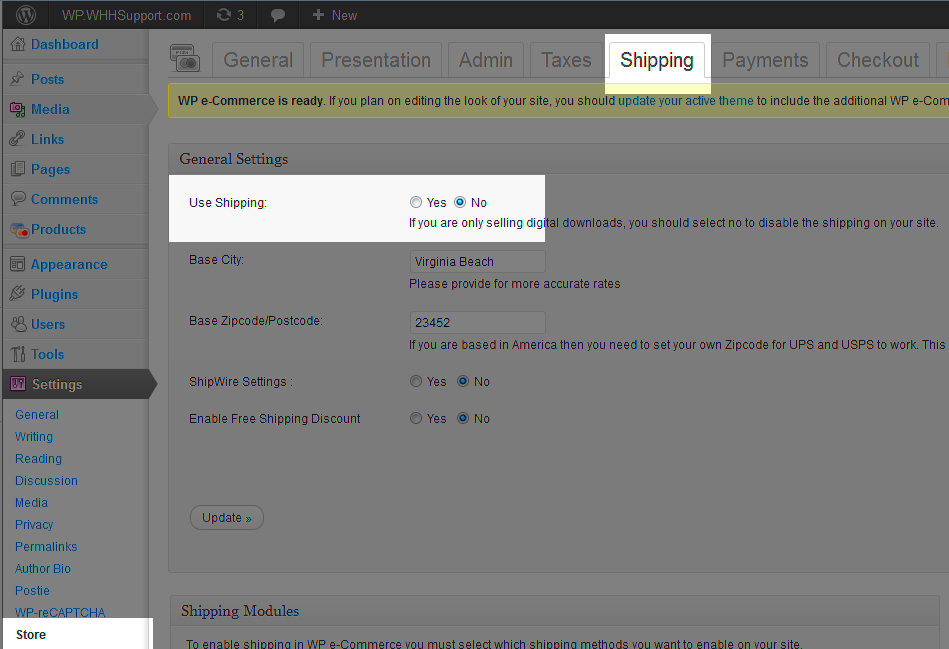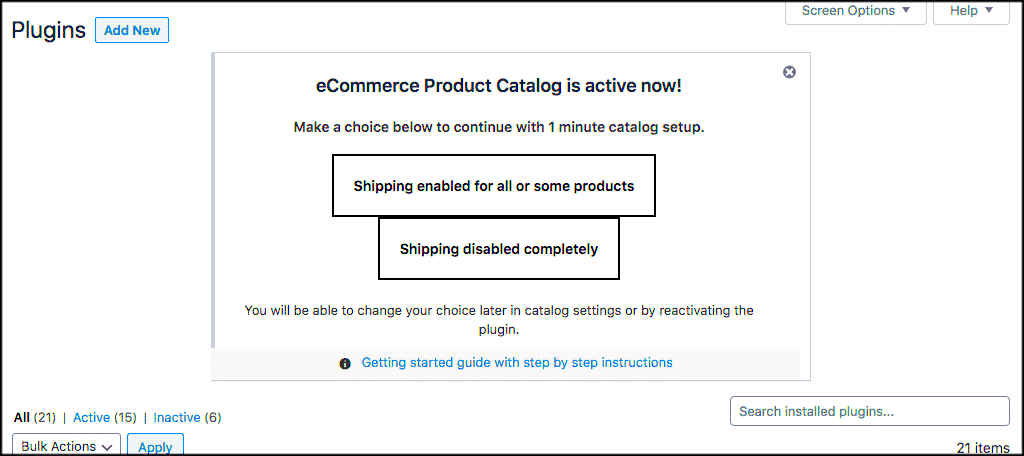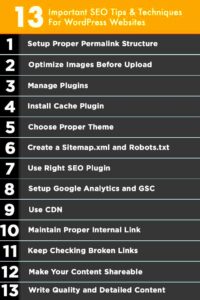Free shipping is a hot topic in the world of e-commerce, and for a good reason. It’s an attractive offer that can significantly boost sales and improve customer satisfaction. Many online shoppers expect free shipping as a standard service. But while it can be beneficial, it’s essential to understand the broader implications before implementing or disabling this option on your WordPress e-commerce site. In this post, we’ll explore why e-commerce businesses use free shipping and what happens when you choose to disable it.
Understanding the Implications of Free Shipping

Disabling free shipping can have multiple consequences—both positive and negative. Let’s dive into some key points to consider:
- Impact on Sales: Customers are often more likely to complete a purchase when they see that shipping is free. If you remove this option, you might notice a decline in sales. According to studies, nearly 50% of shoppers abandon their carts due to unexpected shipping costs.
- Customer Behavior: Shoppers have become accustomed to free shipping. If your competitors offer it, customers may flock to them instead. A recent survey indicated that consumers view shipping costs as an integral part of the purchasing experience.
- Operational Costs: Offering free shipping may seem appealing, but it can eat into profit margins. Evaluate whether your pricing strategy can support this model and whether it matches your business goals.
- Potential for Increased Basket Size: Some businesses disallow free shipping on lower-priced items while promoting it for orders over a certain amount. This tactic can encourage customers to add more items to their cart to qualify.
- Marketing Flexibility: Without free shipping, you might have opportunities to employ other enticing offers, such as discounts or loyalty programs, which can help you maintain customer satisfaction while managing costs.
In summary, the decision to disable free shipping on your WordPress e-commerce site isn’t one to take lightly. Physical costs, customer expectations, and competitive landscape all play a role in shaping the best course of action for your business model.
Reasons to Disable Free Shipping
Free shipping is a tantalizing offer for customers, but it isn’t always the best option for e-commerce store owners. Here are some solid reasons why you might consider disabling free shipping on your WordPress e-commerce site:
- Cost Management: Offering free shipping can eat into your profit margins. If you’re already operating on thin margins, absorbing shipping costs can significantly impact your bottom line.
- Price Perception: Customers often associate prices with value. If you set prices too low to compensate for free shipping, it might undermine the perceived value of your products, making them seem cheap rather than high-quality.
- Encouraging Larger Orders: Instead of free shipping, you can set minimum order thresholds to encourage customers to spend more. This strategy can boost your average order value and help cover shipping costs.
- Managing Customer Expectations: Free shipping may give customers the impression that it’s the norm. When you need to revert to charging for shipping, it may lead to dissatisfaction or abandoned carts.
- Competition Dynamics: If your competitors aren’t offering free shipping, you might want to rethink your strategy. Staying competitive doesn’t always mean following trends; sometimes it means standing out.
Before making decisions about free shipping, it’s essential to evaluate your specific business model, industry trends, and customer expectations. Sometimes a strategic approach can lead to better results than a one-size-fits-all offer.
How to Disable Free Shipping in WooCommerce
If you’ve decided that disabling free shipping is the right move for your WooCommerce store, you’re in the right place! Here’s a step-by-step guide on how to do that:
- Log into Your WordPress Dashboard: Start by logging into your WordPress admin area. You’ll need admin privileges to make changes to the WooCommerce settings.
- Navigate to WooCommerce Settings: Once inside the dashboard, hover over the “WooCommerce” menu option on the left-hand side, and click on “Settings.”
- Go to the Shipping Tab: In the settings page, find the “Shipping” tab. This is where you will manage your shipping methods and zones.
- Select Your Shipping Zone: Click on the shipping zone where free shipping is currently enabled. Free shipping may be included in shipping zones alongside shipping classes.
- Remove Free Shipping Method: Under the shipping methods listed, look for “Free Shipping.” Click on the “Remove” link to permanently take it out of the zone. If you’re using shipping classes, ensure to check them as well.
- Save Changes: Don’t forget to click the “Save changes” button at the bottom of the page to ensure that your changes are applied.
And that’s it! You’ve successfully disabled free shipping on your WooCommerce store. Just like that, you can tailor your shipping strategy to fit your business goals better. If you decide to offer shipping options later, you can always come back and tweak your settings again. Happy selling!
Alternative Shipping Options to Consider
Disabling free shipping on your WordPress e-commerce site doesn’t mean you’re left with a barren landscape of dull options. In fact, it opens the door to a variety of alternative shipping strategies that could enhance your business while catering to your customers’ needs! Here are some worth considering:
- Flat Rate Shipping: This is a straightforward approach where you charge a single, consistent shipping fee regardless of the order size or destination. It’s simple, predictable, and customers appreciate the transparency.
- Variable Rate Shipping: This option bases shipping costs on factors like weight, dimensions, and delivery distance. Although it may require a bit more work upfront, customers often appreciate being charged based on what they actually order.
- Local Delivery: If you’re selling within a specific area, consider offering local delivery for a small fee. This encourages local shoppers and can improve customer loyalty, as they appreciate the convenience.
- Same-day or Next-day Delivery: Offering expedited shipping options can be a game-changer. Although it may come at a premium, customers in a hurry often opt for faster delivery, making this an excellent upsell opportunity.
- In-store Pickup: If you have a physical location, consider allowing customers to order online and pick up in-store. This not only saves on shipping costs but also drives foot traffic to your store.
Regardless of the option you choose, make sure to clearly communicate shipping policies on your website. Clarity is crucial in ensuring a smooth transaction experience for your customers!
Impact on Customer Experience and Sales
When you decide to disable free shipping on your WordPress e-commerce site, it’s only natural to wonder how this change will affect your customers. The reality is that even subtle variations in your shipping policy can significantly impact customer experience and ultimately sales. Let’s break it down:
Customer Perception: The moment you remove free shipping, customers might feel less inclined to complete a purchase. Research shows that free shipping can feel like a reward, enhancing the overall buying experience. In fact, many shoppers abandon their carts due to unexpected shipping costs!
Increased Satisfaction with Alternative Options: If you provide clear alternatives that offer good value, like flat-rate shipping or local delivery, customers can be pleasantly surprised. They appreciate transparency and having options to meet their needs.
Potential for Increased AOV (Average Order Value): One strategic way to combat the negativity of eliminating free shipping is to introduce a minimum purchase amount to qualify for discounts on shipping. This can increase the average order value, as customers are motivated to spend more to avoid shipping fees.
Retention Rates: Ensuring a positive experience post-change is crucial. If customers feel swindled or confused by your shipping policy, they might not return. Regular communication, surveys, and responsiveness to feedback can significantly help in maintaining customer loyalty.
Ultimately, the way you handle shipping can either hinder or enhance the customer experience. Approach it thoughtfully, focus on communication, and you’ll likely find that your business can not only survive but thrive!
7. Testing and Monitoring Your Shipping Strategy
When you decide to disable free shipping on your WordPress e-commerce site, it’s crucial to have a solid plan for testing and monitoring your shipping strategy. After all, your shipping options play a pivotal role in customer satisfaction and conversion rates. Here’s how to ensure everything runs smoothly.
1. A/B Testing: To gauge how changes impact your sales, consider conducting A/B tests. You can randomly present different shipping options to your visitors. For example:
- Group A might see standard shipping rates.
- Group B could still see a limited-time free shipping offer.
Measure the overall performance based on transaction conversions, average order value, and drop-off rates. This will help you identify which strategy resonates best with your customers.
2. Monitor Cart Abandonment Rates: Use tools like Google Analytics to track cart abandonment. If you notice an uptick post-disablement, it might be time to reconsider your shipping options. High abandonment rates can indicate that your new shipping policy is affecting buying behavior.
3. Customer Feedback: Don’t be shy! Reach out to your customers. Simple surveys post-purchase or feedback forms will give you the insights you need. Ask direct questions about their shipping experience. This qualitative data is invaluable.
4. Adjust Based on Insights: Use the data you collect to rethink your strategy. If your findings indicate dissatisfaction, consider reintroducing free shipping for specific orders or promotions. Flexibility is key to maintaining a positive shopping experience.
8. Conclusion and Final Thoughts
Disabling free shipping on your WordPress e-commerce site is a significant change that can affect your bottom line. However, it’s not a matter of black and white; it’s about striking a balance that works for both your business and your customers. Embracing a thoughtful approach, characterized by testing and ongoing monitoring, can lead to better shipping practices over time.
Always remember that your shipping strategy isn’t static, it’s dynamic. As market trends shift and customer expectations evolve, be prepared to adapt. Testing alternative methods, collecting feedback, and keeping an eye on key performance indicators will empower you to make informed decisions.
With a well-planned strategy, you can ensure that you’re not just pulling free shipping off the table but replacing it with options that still keep your customers satisfied. So, whether it’s free shipping thresholds, loyalty discounts, or flat-rate shipping, let your customer insights guide you. Happy selling!



